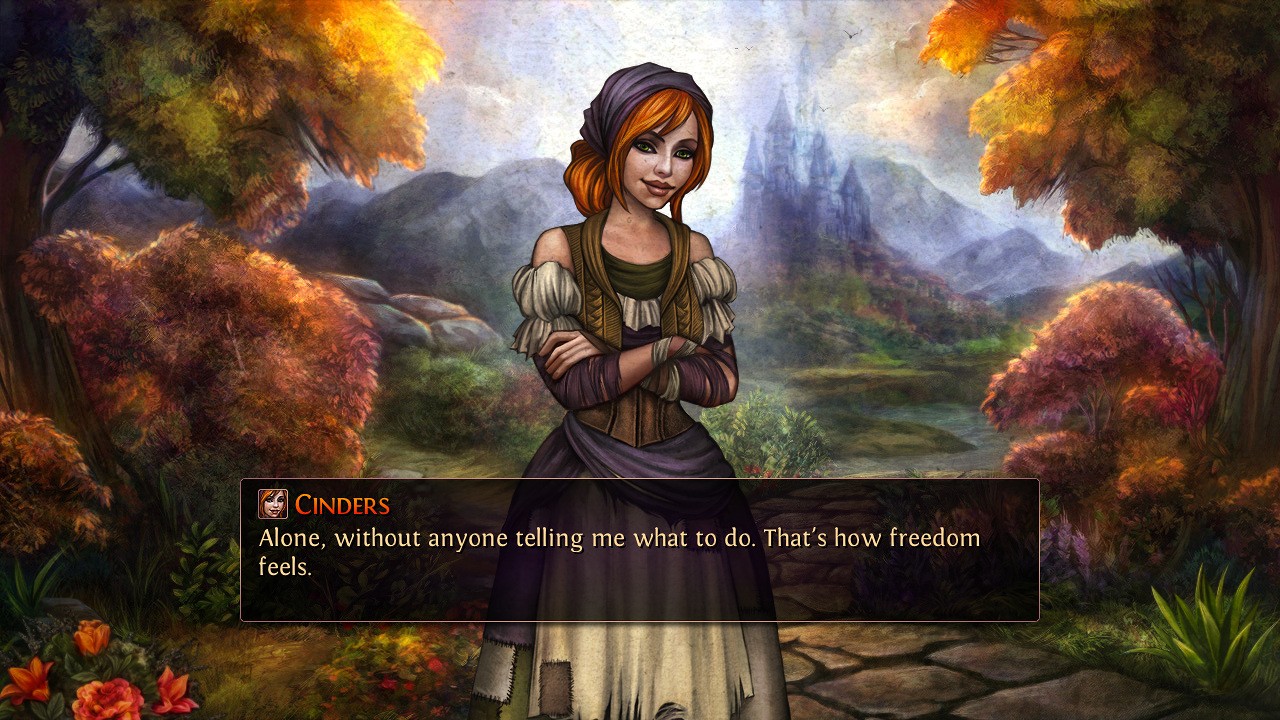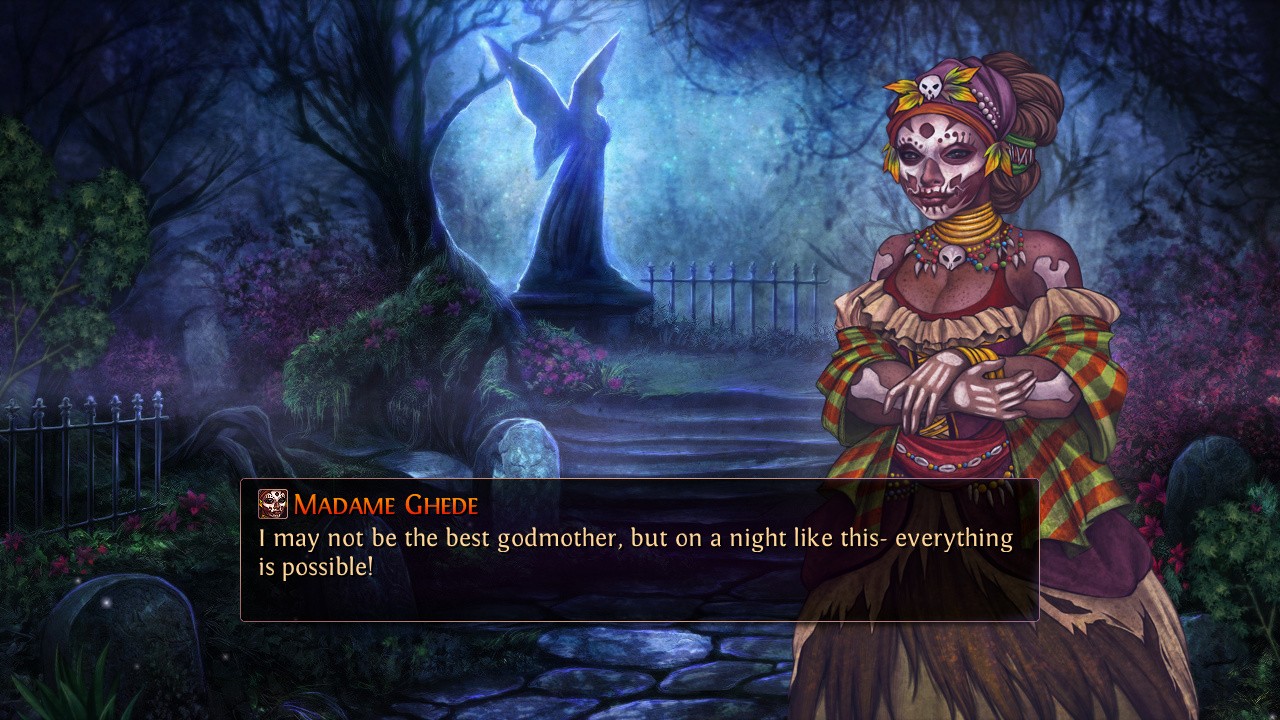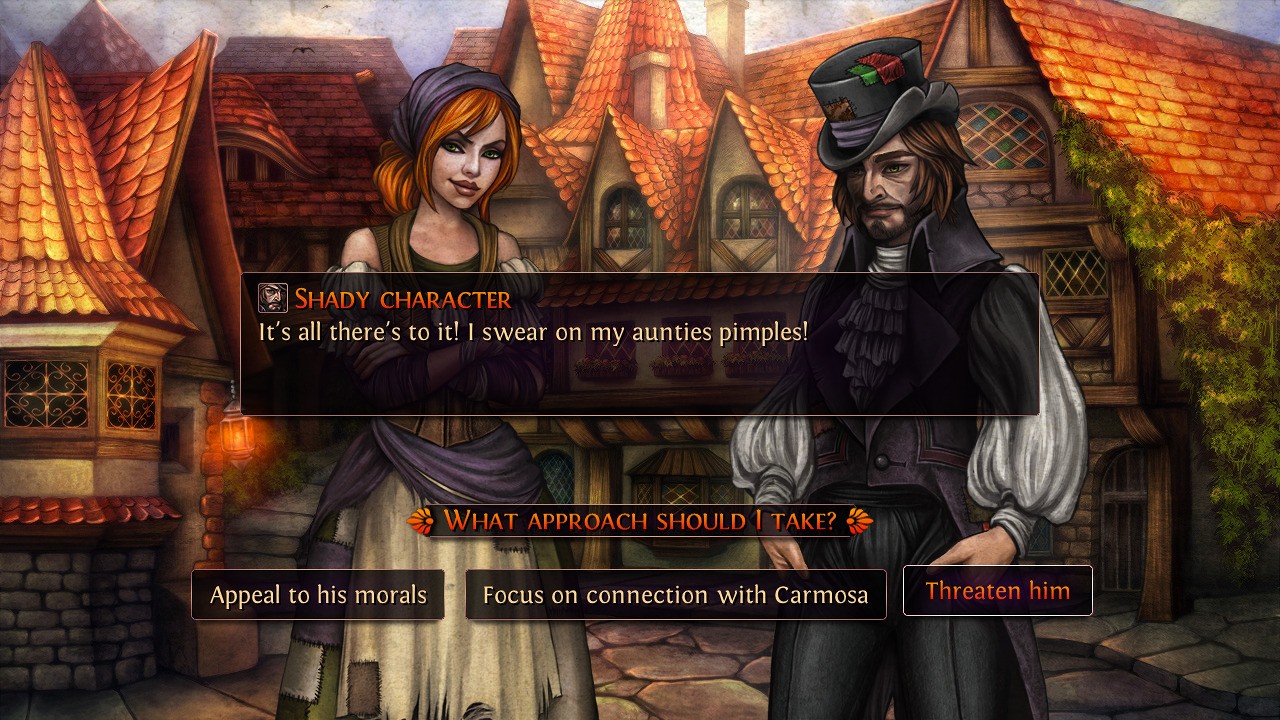
A successful and enjoyable Visual Novel and its gameplay normally revolve around three things – a pleasing art style, expansive branching narratives with many choices and a thought-provoking premise. Cinders is a unique, modern retelling of the traditional Cinderella story in Visual Novel form but doesn’t quite play by the rules of the original fairy-tale. While Cinders is an ambitious attempt at rewriting a classic story and creating a ‘choose your own adventure’ level of agency for the protagonist, it doesn’t always hit the mark with its execution of the ideas it was built upon. While it has all the listed features that make for a successful entry into this video game genre, Cinders seems to be trying a bit too hard.
Our plot loosely follows the fairy tale which many of us will have heard in some form. Prior to the beginning of the story, Cinders’ father died and left her under the guardianship of her wicked step-mother and in the company of two wicked stepsisters. But the world of Cinders is not quite so simple, as not only the lives and motivations of our modern Cinderella but also the motivations of her step-mother Lady Carmosa and step-sisters Sophia and Gloria take centre-stage in MoaCube’s modern recreation. The player encounters branching narratives, making decisions about how Cinders should act even to the most minute detail. With 120 decision points and over 300 total choices, the Cinders who you play as is almost completely under your control. You can choose to be kind or cruel to your step-family, marry the prince or do it all your own way. With multiple endings to unlock and collectable achievements to uncover through different decisions, there are hours of play in Cinders.
However, these branching narratives become slightly redundant with the gameplay mechanics which accompany them. Like many visual novels, there is a very needed save system. This allows you to save whenever you want – even before big decisions. While you cannot rewind big decisions, you can rewind any dialogue at will if you miss anything. This save system however eliminates any risk from the game, as saving before a big decision means you can reload a previous save file if you are unsatisfied with how the narrative path you chose is going. After a single playthrough, you can skip through any dialogue you have already seen. This means achieving all of the endings doesn’t require multiple careful decisions based on reading the narrative but by zooming through everything you’ve seen already and choosing a different option this time around. Additionally, many of the pathways have IDENTICAL dialogue for large chunks of the branch, encouraging players to skip through what is a fairly interesting narrative with developed main and side characters to get to the few lines of dialogue that make this ending vaguely different.

A disappointing feature of Cinders was how the ‘endings’ of the games worked. After the end of the traditionally understood plot, a ball and meeting the prince, the game allows you at most two more choices before the narrator sums up whether Cinders lived happily ever after or not. Very little is said in these endings about Sophia and Gloria. These not so wicked, but more misunderstood step-sisters had significant developments made to their characters. You were encouraged to befriend them, empathise with their feelings despite having choice over whether you do so or not. To have their character really developed, only to have all of their problems addressed and then disregarded for Cinders’ maybe happily ever after was really disappointing. The female-led narrative had themes of independence, friendship and freedom and this was an awkward way to end these well-written relationship developments. Further, a lot of the dialogue was a bit too on the nose. The rating for this game in the Switch eshop is ‘12’ but some of the dialogue is so centered around exposition and explaining complex themes through character dialogue lacked nuance and you would not be criticised for believing this was a game written for children. I loved the concept but was disappointed at how hard the themes were hammered into the player’s experience. Show don’t tell comes to mind here and while the story was enjoyable, a lot of the dialogue was telling me things I had already inferred from playing.
The user interface of Visual Novels is relatively important, considering how minimalistic and text-heavy the style is inherently. While the zoom feature as mentioned earlier was very useful but also quite difficult to control. It moved very quickly, coming to an abrupt stop at any new dialogue or any decision-making scenes within the narrative. I found this difficult to control. Additionally, while I loved the idea of collectable items for unlocking certain achievements, I felt the gameplay and controls really made the desire to do so quite limited. When all it took was to return to a save-state and zip through some dialogue to choose a different option, the interest in discovering three new lines of dialogue didn’t have any appeal. I’m sorry to say but in this iteration of Cinderella, romance really is dead.

MoaCube’s chosen art-style is enchanting and whilst the music was at time repetitive, it was not at all unpleasant. It was certainly the best-looking visual novel I had seen, shying away from a traditional Bishōnen-like animation style. Still-frames of the beautiful artwork were often made especially special by subtle additions of animation. A flickering candle. Floating blue lights above the lake. There were few different areas and of those areas, only a couple had multiple ‘rooms’ or areas, but the artwork that was present was stunning. Each character was clearly designed with intent. My personal favourite was one of the two possible ‘fairy godmothers’ ‘Madam Ghede’, the local ‘Witch’ subject to mixed reception from every place she lives including Cinders’ local town. Her design was beautiful and is a prime example of the dedication to aesthetics that Cinders upholds. The soundtrack for the Visual Novel worked for each scene, fitting the tone and mood to an adequate level. But the experience of the game would not be hindered by turning the sound off, and therefore I cannot commend it for its musical choices. Also, there were few sound effects in the game which made some scenes awfully quiet.
While Cinders has attempted to make a game with multiple endings, these endings are too similar to make the game successfully replayable. It was fairly entertaining to play first-time round but not engaging enough to inspire a second or even half-playthrough to collect the unlockables. As I’ve stated earlier, I love the themes but hate the way they read. And there is a lot of reading. Those who want all action and little story, avoid this genre and especially avoid Cinders. The retail price of the game is higher than most of the genre at £17.99 (UK eShop) and I think there are better, longer visual novels that are more affordable. Katawa Shoujo by Four Leaf Studios is a comparable example, with interesting themes and distinct pathways. Unlike Cinders, the pathways written by Four Leaf are largely different and have very little overlapping dialogue or scenes after the first chapter. If you are a fan of Later Daters of which the second part comes out later in 2020, or of Speed Dating for Ghosts which has a quirky spin on the Visual Novel Dating-Sim genre, I wouldn’t entirely disregard Cinders. The story is good if a little overwritten, and I commend MoaCube for their rewrite of a fairy tale in good need of a modern update. It was nice to play Cinderella for a day but I’ve retired this glass slipper and won’t be revisiting this game for another ending.
REVIEW CODE: A complimentary Nintendo Switch code was provided to Bonus Stage for this review. Please send all review code enquiries to press@4gn.co.uk.
Subscribe to our mailing list
Get the latest game reviews, news, features, and more straight to your inbox
Thank you for subscribing to Bonus Stage.
Something went wrong.
Cinders Review
-
Gameplay - 6/10
6/10
-
Graphics - 7/10
7/10
-
Sound - 6/10
6/10
-
Replay Value - 5/10
5/10
Overall
Summary
An enchanting visual novel which puts you in the drivers seat in choosing how this fairy tail ends. Cinders doesn’t quite reach it’s potential.
Pros
- Dazzling Artwork.
- Pleasant Music.
- A successful retelling of a story.
Cons
- Limited unique content in pathways.
- Lacking in sound effects.
- Barely any replay value.





